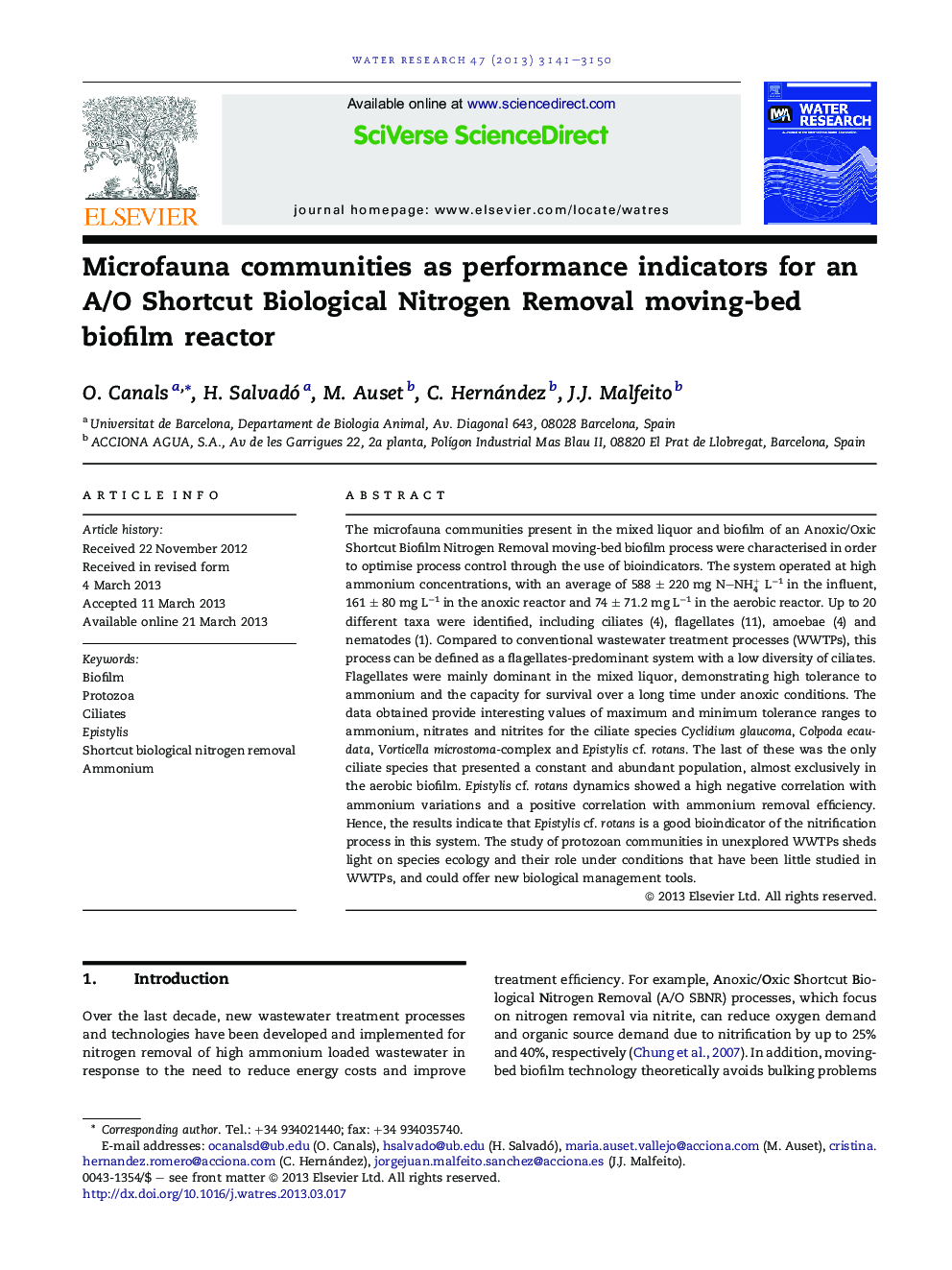| کد مقاله | کد نشریه | سال انتشار | مقاله انگلیسی | نسخه تمام متن |
|---|---|---|---|---|
| 4482129 | 1316848 | 2013 | 10 صفحه PDF | دانلود رایگان |

• Microfauna inhabiting an A/O SBNR process have been studied.
• The system was fed with high ammonium loaded wastewater.
• The toxic effect of ammonium on ciliate community has been confirmed.
• Ciliates do not adversely affect the efficiency of nitrification.
• Epistylis cf. rotans could be a useful bioindicator of ammonium removal efficiency.
The microfauna communities present in the mixed liquor and biofilm of an Anoxic/Oxic Shortcut Biofilm Nitrogen Removal moving-bed biofilm process were characterised in order to optimise process control through the use of bioindicators. The system operated at high ammonium concentrations, with an average of 588 ± 220 mg N–NH4+ L−1 in the influent, 161 ± 80 mg L−1 in the anoxic reactor and 74 ± 71.2 mg L−1 in the aerobic reactor. Up to 20 different taxa were identified, including ciliates (4), flagellates (11), amoebae (4) and nematodes (1). Compared to conventional wastewater treatment processes (WWTPs), this process can be defined as a flagellates-predominant system with a low diversity of ciliates. Flagellates were mainly dominant in the mixed liquor, demonstrating high tolerance to ammonium and the capacity for survival over a long time under anoxic conditions. The data obtained provide interesting values of maximum and minimum tolerance ranges to ammonium, nitrates and nitrites for the ciliate species Cyclidium glaucoma, Colpoda ecaudata, Vorticella microstoma-complex and Epistylis cf. rotans. The last of these was the only ciliate species that presented a constant and abundant population, almost exclusively in the aerobic biofilm. Epistylis cf. rotans dynamics showed a high negative correlation with ammonium variations and a positive correlation with ammonium removal efficiency. Hence, the results indicate that Epistylis cf. rotans is a good bioindicator of the nitrification process in this system. The study of protozoan communities in unexplored WWTPs sheds light on species ecology and their role under conditions that have been little studied in WWTPs, and could offer new biological management tools.
Microfauna community froman Anoxic/Oxic Shortcut Biological Nitrogen Removal moving bed biofilm treating high ammonium loaded wastewater.Figure optionsDownload high-quality image (168 K)Download as PowerPoint slide
Journal: Water Research - Volume 47, Issue 9, 1 June 2013, Pages 3141–3150